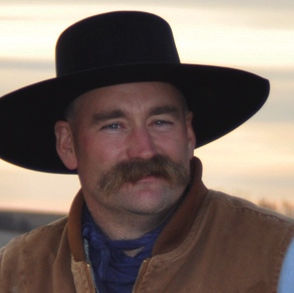A conversation recently with Hank Vogler on Rural Route Radio really got me thinking even more about government intervention in food production. I remember my very first trip to South Dakota in 1989 and the discussion we had about the different crops planted there.
Instead of just guessing I actually went home and did some digging. Since 1989, corn has increased by 30%, soybeans by six-fold and everything else has declined greatly. Sunflowers, alfalfa, oats, wheat and all other crops have declined in a crippling effect. So why have we shifted all production in the central United States to corn and soybeans? Well, let’s dig deeper.
In my home county of Sherman in the middle of Nebraska, the number of center pivots that have been placed basically on the Sandhills is mindboggling. My first trip to Sherman County was in November 1992 and I remember my soon-to-be father-in-law talking about the number of folks who were tearing up native pasture and putting in center pivot irrigation. So what if we just pause for a moment and ask ourselves why did that happen?
Right off, I am a livestock person; I always have been and always will be. However, for the context of this discussion let’s talk about true health and prosperity of the farm family. I know for a fact that I have reaped the rewards of higher production volumes of corn and soybeans through more moderate feed costs for the livestock that I raise, although this also needs some further investigation.
With a quick search I have located some very interesting things:
According to a report by the U.S. Geological Survey, agriculture is a major user of ground and surface water in the United States, and irrigation accounted for 42% of the nation’s total freshwater withdrawals in 2015. According to the 2017 Census of Agriculture, farms with some form of irrigation accounted for more than 54% of the total value of U.S. crop sales, while irrigated land accounted for less than 20% of harvested cropland.
Clearly the amount of timely water matters in crop production and quite frankly is no different for grass production. Federal government subsidies actually paid farmers to put in irrigation in the name of food production and national security. So my question is this: Would it now be that same hand that feeds you saying that farmers are using too much water?
There is also a bit of research that talks about the farmers’ cost share of irrigation for crops. Lo and behold I found an old study from 2015 at the University of Illinois with extremely interesting findings.
The hypothesis was tested in a tobacco crop and the results were incredible. By increasing PsbS expression stomatal openings were reduced, and the ratio of carbon dioxide going into a plant to water escaping improved by 25%, according to Belgium researchers. This effectively meant the plant would need 25% less water to achieve the same rate of photosynthesis. The experiment also showed no significant difference in overall yield or size between modified and non-modified plants.
Did I just read that increased carbon dioxide and decreased access to water actually can increase yields without making production suffer? Yes, in fact I did. We have demonized carbon dioxide and clearly it is part of the solution, and with that said one must ask why are we burying 3.2 trillion tons of plant food even in drought conditions?
It is very clear to me we have been led down a path that allows some in government to scream that we, the farmers and ranchers, are not good stewards of natural resources. It is quite clear to me that if we still had more grass with accelerated cows grazing, the health of the human being, the planet and the farm balance sheet would all be better off.
Editor’s note: The views expressed here are the author’s own and do not represent the views of High Plains Journal. Trent Loos is a sixth generation United States farmer, host of the daily radio show, Loos Tales, and founder of Faces of Agriculture, a non-profit organization putting the human element back into the production of food. Get more information at www.LoosTales.com, or email Trent at [email protected].

